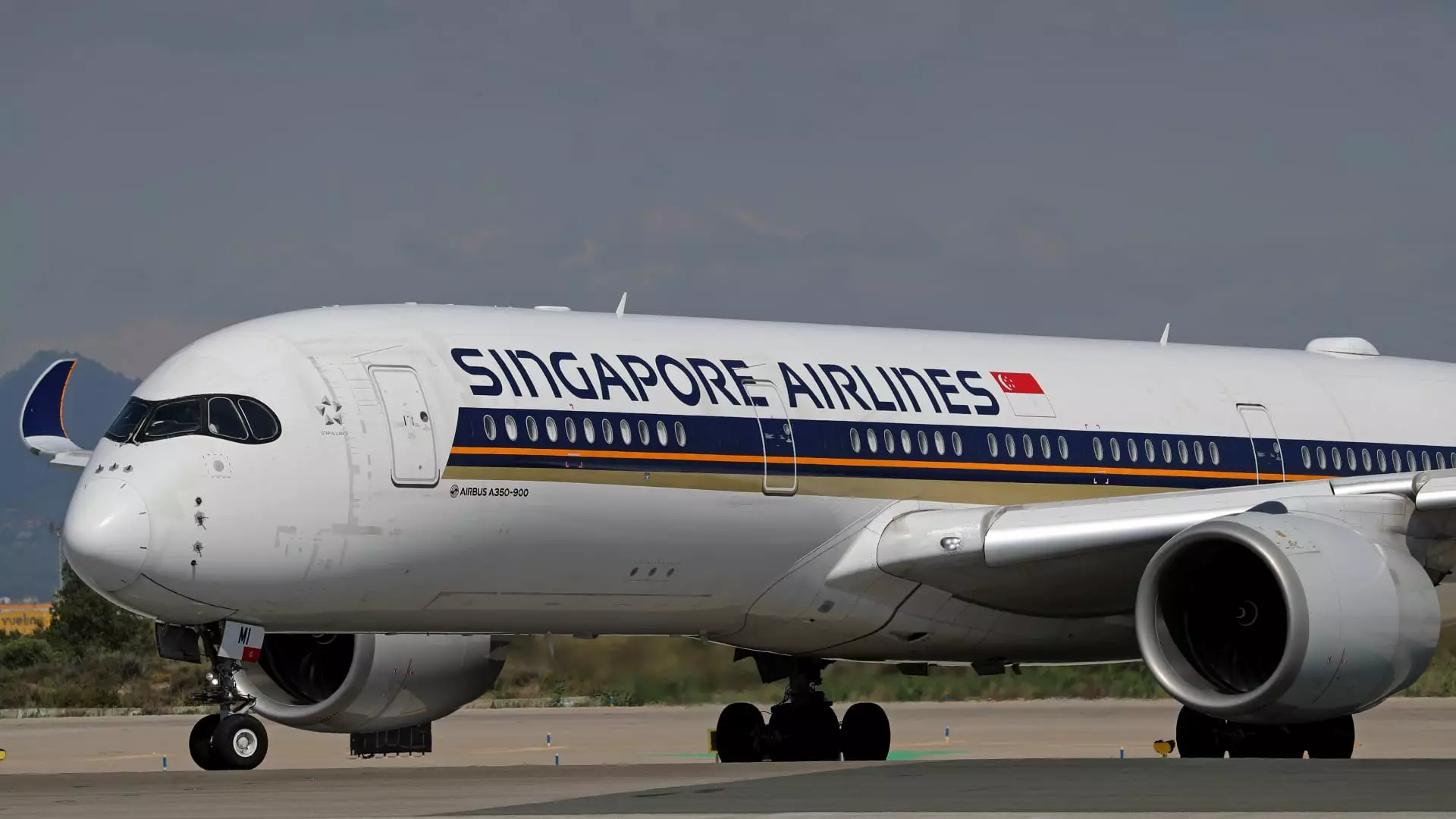Singapore Airlines, one of Asia’s premier carriers, has seen a significant downturn in its financial performance during the first half of the fiscal year, spanning from April to September. The airline reported a staggering 48.5% decline in net profits, totaling 742 million Singapore dollars (approximately $559 million), compared to the impressive 1.44 billion Singapore dollars achieved in the corresponding period last year. Such a sharp drop in earnings raises important questions about the sustainability of the airline’s profitability in an increasingly challenging market.
The decline in profits has been attributed to intensified competition and lower yields. As other airlines strive to recover from the pandemic’s impact, they are increasing their capacities, which directly influences market prices and profit margins. Singapore Airlines’ Chief Commercial Officer, Lee Lik Hsin, revealed during an earnings briefing that the global competitive landscape has intensified, with competitors rapidly approaching pre-pandemic operational levels. Consequently, this transition has strained the yields that airlines depend on for profitability, highlighting a critical aspect of the current aviation landscape that requires strategic adjustments.
Despite these challenges, Singapore Airlines recorded a modest revenue increase of 3.7%, reaching 9.5 billion Singapore dollars. However, this increase is somewhat overshadowed by the fact that operating profit plummeted nearly 49%, indicating that while revenue growth is present, it is not sufficiently translating into profit. A noteworthy observation is the discrepancy between passenger traffic growth and capacity expansion. Although passenger traffic rose by 7.9%, it fell short of the 11% increase in capacity, leading to a decrease in the passenger load factor. This scenario can be seen as a crucial indication of the imbalance in supply and demand, warranting critical reassessment of operational strategies.
In a bid to reassure stakeholders, Singapore Airlines maintained its interim dividend of 10 Singapore cents per share. This decision reflects a commitment to shareholder returns, even in tough financial times. However, sustaining dividends in the face of declining profits poses questions about the long-term viability of such payouts and whether the airline’s strategic priorities are aligned with maintaining financial health over the long run.
The airline’s management acknowledges that the road ahead remains fraught with challenges, as the competitive environment is expected to persist. Nevertheless, they remain optimistic about demand for air travel, anticipating robust growth in the latter half of the financial year. As a proactive measure, Singapore Airlines has initiated a significant SG$1.1 billion cabinet retrofit program for 41 of its Airbus A350 jets, set to enhance passenger experience and improve operational efficiency. Scheduled to be completed by 2030, this refurbishment aims to position the airline for future competitiveness.
Ultimately, Singapore Airlines stands at a crossroads, balancing the dual priorities of fostering growth while navigating a competitive landscape that is reshaping the airline industry. As the airline embarks on strategic adjustments, agility and innovative thinking will be critical in addressing the ongoing challenges and leveraging new opportunities that arise in the evolving market.

